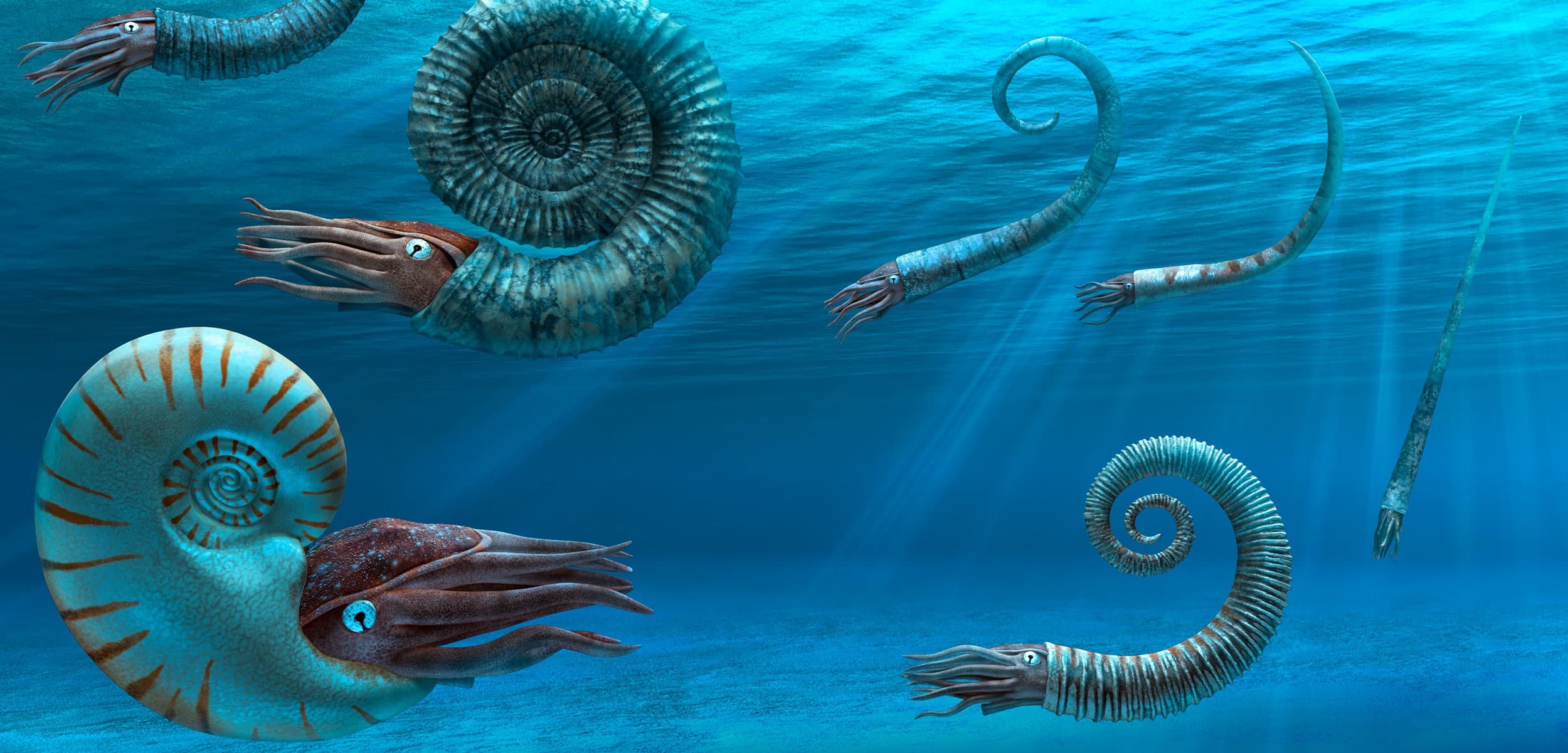
Ammonites, ancient marine mollusks, roamed the seas millions of years ago. These fascinating creatures, now extinct, left behind spiral shells that captivate scientists and fossil enthusiasts alike. Did you know that ammonites are more closely related to modern squids and octopuses than to snails? Their intricate shell patterns and sizes, ranging from a few inches to over nine feet, tell a story of evolution and adaptation. Fossils of these creatures provide valuable insights into Earth's history, helping researchers understand past climates and environments. Dive into these 24 amazing ammonite facts to uncover the secrets of these prehistoric wonders!
Key Takeaways:
- Ammonites were ancient marine creatures with spiral shells, related to modern squids. Their fossils help scientists understand Earth's history and marine ecosystems.
- The intricate patterns on ammonite shells protected them from predators, and their fossils are found worldwide, offering valuable insights into Earth's past.
What Are Ammonites?
Ammonites were marine mollusks that lived millions of years ago. Their spiral shells make them one of the most recognizable fossils. Let's dive into some fascinating facts about these ancient creatures.
- Ammonites lived during the Devonian period, around 400 million years ago.
- They are named after the Egyptian god Ammon, who had ram's horns resembling their shells.
- Ammonite shells are divided into chambers, which they used to control buoyancy.
- These creatures are closely related to modern-day squids, octopuses, and cuttlefish.
- Ammonites went extinct around 66 million years ago, at the same time as the dinosaurs.
Ammonite Shells
The shells of ammonites are not just beautiful; they tell us a lot about their lives and the environment they lived in.
- Ammonite shells can be found in various shapes, including spiral, coiled, and even straight forms.
- The shell's intricate patterns and ridges helped protect them from predators.
- Some ammonite shells are iridescent due to the mineral aragonite, which can create a rainbow-like effect.
- Fossilized ammonite shells are often used in jewelry and decorative items.
- The largest ammonite ever found had a shell diameter of over 6.5 feet!
Ammonite Fossils
Fossils of ammonites are found worldwide and provide valuable information about Earth's history.
- Ammonite fossils are commonly found in sedimentary rocks like limestone and shale.
- These fossils help scientists date the rocks in which they are found, a process known as biostratigraphy.
- Ammonite fossils have been discovered on every continent, including Antarctica.
- Some ammonite fossils contain preserved soft tissues, offering rare insights into their biology.
- The presence of ammonite fossils in a region can indicate that it was once underwater.
Ammonite Diet and Behavior
Understanding what ammonites ate and how they behaved helps paint a clearer picture of their role in ancient marine ecosystems.
- Ammonites were carnivorous, feeding on small marine animals like plankton, crustaceans, and other mollusks.
- They used their tentacles to capture prey, similar to modern cephalopods.
- Ammonites likely had a beak-like structure to help them break down their food.
- These creatures could move by jet propulsion, expelling water through a funnel-like structure.
- Ammonites may have lived in groups, as suggested by fossil beds containing numerous individuals.
Ammonites in Culture and Science
Ammonites have fascinated humans for centuries, influencing both culture and scientific research.
- In medieval Europe, ammonites were believed to be petrified snakes and were called "snakestones."
- Ammonite fossils are often used as index fossils, helping geologists correlate the age of rock layers.
- The Fibonacci sequence, a mathematical pattern, can be observed in the spiral of some ammonite shells.
- Ammonites are featured in various myths and legends, symbolizing change and evolution.
The Fascinating World of Ammonites
Ammonites, with their spiral shells and ancient origins, offer a glimpse into Earth's distant past. These marine creatures thrived for millions of years before their extinction around 66 million years ago. Their fossils, often found in limestone and chalk, provide valuable insights into prehistoric marine environments.
Ammonites' intricate shell patterns and varying sizes, from a few inches to several feet, make them a favorite among fossil collectors. Their presence in different geological layers helps scientists date rocks and understand historical climate changes.
Despite their extinction, ammonites continue to captivate us, bridging the gap between ancient oceans and modern science. Their legacy lives on, reminding us of the ever-changing nature of life on Earth. Whether you're a budding paleontologist or just curious about the past, ammonites offer a fascinating journey through time.
Frequently Asked Questions
Was this page helpful?
Our commitment to delivering trustworthy and engaging content is at the heart of what we do. Each fact on our site is contributed by real users like you, bringing a wealth of diverse insights and information. To ensure the highest standards of accuracy and reliability, our dedicated editors meticulously review each submission. This process guarantees that the facts we share are not only fascinating but also credible. Trust in our commitment to quality and authenticity as you explore and learn with us.


